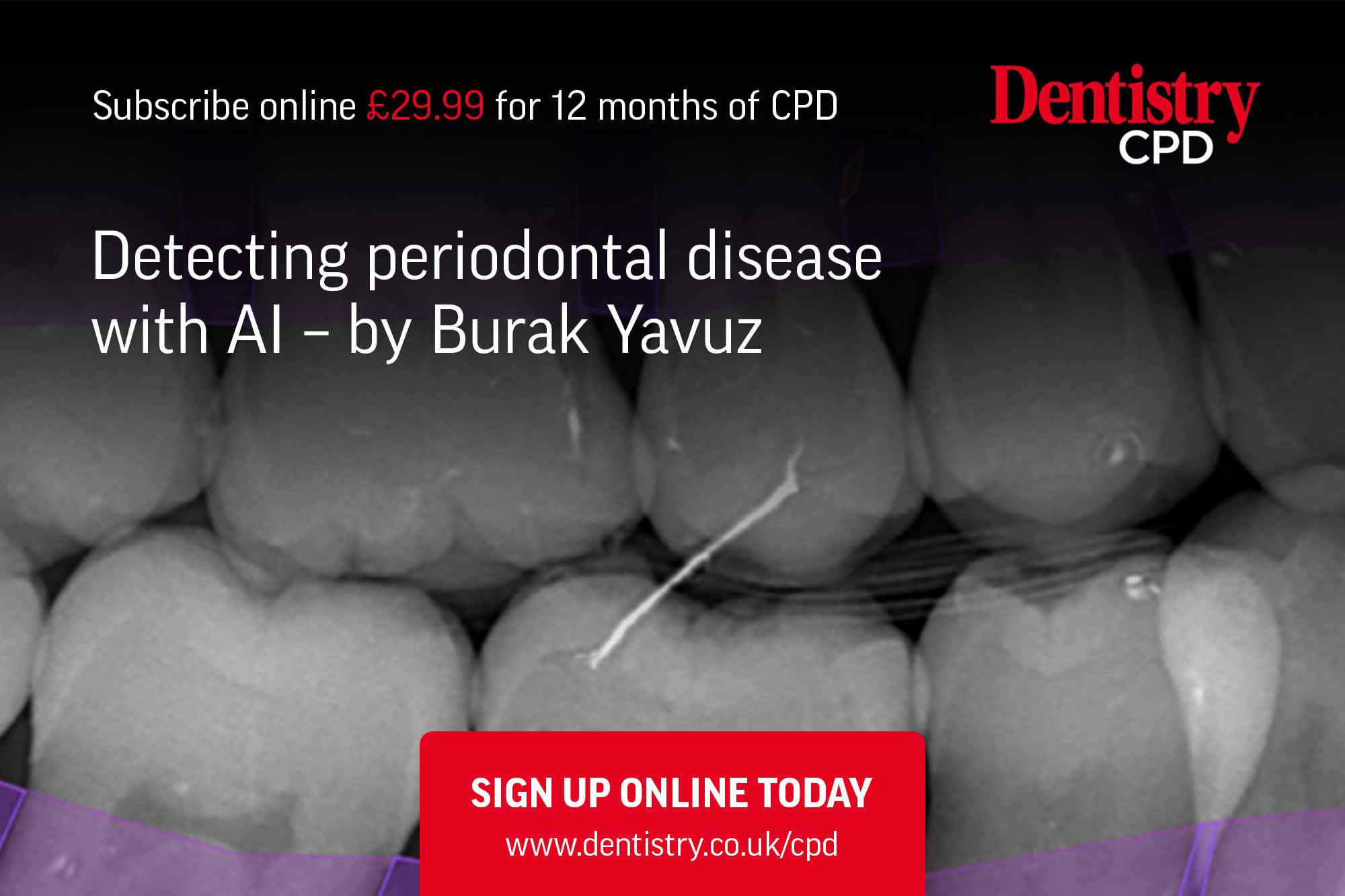 Muhammet Burak Yavuz summarises his artificial intelligence solution presented at Europerio10, which automatically detects periodontal disease from bitewing X-rays.
Muhammet Burak Yavuz summarises his artificial intelligence solution presented at Europerio10, which automatically detects periodontal disease from bitewing X-rays.
On the occasion of the Europerio10 congress, organised by the European Federation of Periodontology (EFP) in Copenhagen over 15-18 June, I presented the abstract ‘Detecting periodontal bone loss with an artificial intelligence approach on dental bitewing radiographs’, in the framework of the session ‘Periodontal diagnosis and disease progression’.
Artificial intelligence
Artificial intelligence (AI) is a field of computer science that uses different techniques to create systems that mimic human intelligence. It is known that the potential of AI systems in the medical field is increasing day by day.
In parallel with the developments in the medical field, the use of these systems in the processing and interpretation of dental radiography images has become popular in the field of dentistry and is among the current approaches of dentistry today.
When the literature is examined, it is seen that the success of AI systems in various studies is evaluated in many pathologies detection, such as impacted teeth, caries, tooth root fracture and apical lesion detection from different dental radiography images.
In addition, there is evidence that AI systems can be used easily and successfully for many purposes, such as tooth numbering and anatomical landmark detection. All these developments have made it inevitable to increase the number of technological-based initiatives aiming to produce solutions with AI systems in the dental field.
When both academic and technological developments are examined, there are limited studies and evidence for the determination of periodontal diseases, which are accepted as one of the most common diseases in the world, with these systems.
As we realised this shortcoming, my research team and I decided to work in the field of periodontology and to find solutions with deep learning algorithms. My teammates are developing software called Craniocatch as an AI solution in dentistry and are already actively working on this issue.
Simultaneously with the studies we carry out in many areas of dentistry, many of our studies – such as periodontal disease detection, classification and bone loss determination in 2D radiography images (such as panoramic, periapical, bitewing radiography) and in 3D radiography images (CBCT) – continue.
In addition, we carry out studies for the automatic determination of periodontal and mucogingival status with the help of AI from digital dental photographs.
To read the rest of this article and gain access to hundreds of other CPD courses, visit Dentistry CPD.


